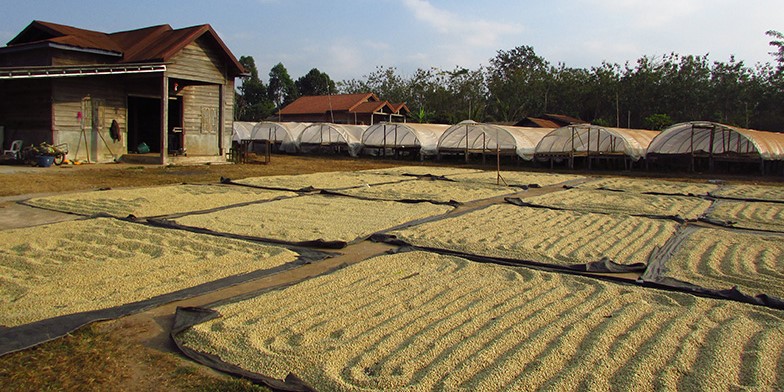Policy Brief: Bittersweet fruits of ‘miracle growth’: Identifying poverty and labour dynamics in coffee heartlands.
In this policy briefing, Patrick Illien and co-authors from the Centre for Development and Environment (CDE) at the University of Bern as well as from partner institutions in Laos and Rwanda showcase the importance of evidence-based tools for measuring the impacts of agricultural growth on rural poverty. Agricultural growth can not only drive economic development but also bears significant risks for low-income countries, and particularly for marginalized population groups.

The benefits of economic growth from increasingly export-led agriculture are manifold. It stimulates labour markets and production upgrades at the local level, provides foreign exchange earnings and may trigger the growth of related sectors. However, these positive improvements often have a downside. Harmful effects can include rising inequality due to unevenly distributed gains, environmental hazards and the expropriation of local landowners. In Laos and Rwanda, poverty is often the result of workers being integrated into markets on unfavourable terms, despite increasing coffee production.
Two non-monetary poverty indexes are assessed in the policy brief which facilitate the recognition of groups or individual households left behind in countries showcasing rising commercial agriculture. The Multidimensional Poverty Index (MPI) is a measure including three dimensions: Health, Education and Standard of Living. While the data collection for the index is quite resource-intensive, the results are extremely useful for policymakers. The Extreme Deprivation Index (EDI), on the other hand, assesses the ownership of important durable consumer goods of individual households and is especially useful when household data is scarce. Both indexes were tested in the main coffee-producing areas of Laos and Rwanda, two countries which have shown rapid and sustained growth over recent decades. The results highlight the key markers of rural poverty and underline the role of labour relations in mediating the link between economic growth and poverty.

Policy Implications:
- The MPI and the EDI are effective non-monetary tools to measure the impact of agricultural growth in low-income countries.
- Productive employment and strong labour protections are crucial to reduce rural poverty, as is safeguarding the assets of low-income households.
- Provision of public goods and services remains essential
Read the complete external page policy brief.
Contact: Patrick Illien, . After working for the Centre for Development and Environment (CDE) in Bern, Patrick Illien is now working for ETH in the Department of Environmental Systems Science: Food Systems Economics and Policy Group. (Prof. Eva-Marie Meemken).
Citation: Illien P, Birachi B, Douangphachanh M, Phommavong S, Bieri S, Lannen A. 2023. Bittersweet Fruits of “Miracle Growth”: Identifying Poverty and Labour Dynamics in Coffee Heartlands. CDE Policy Brief, No. 20. Bern, Switzerland: CDE.
DOI: https://doi.org/10.3929/ethz-b-000619216